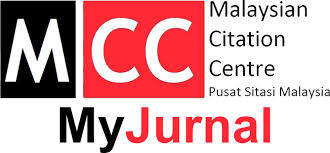FA’ILIYYAH ISTRATIJIYYAH AL-TA’ALLUM AL-MUTAZAMIN WA GHAYR AL-MUTAZAMIN ‘ALA ISTIMRARIYAT AL-TA’LIM FI AL-MADARIS AL-HUKUMIYYAH AL-MALIZIYYAH ATHNA’ AZMAH KUFID-19
[EFFECT OF THE SYNCHRONOUS AND ASYNCHRONOUS LEARNING STRATEGIES ON THE CONTINUITY OF EDUCATION IN MALAYSIAN PUBLIC SCHOOLS DURING THE COVID-19 CRISIS]
Keywords:
strategy, secondary schools, principals, administrators , continuity of educationAbstract
Abstract: The current study aims to reveal the role of applying synchronous and asynchronous learning strategies in Malaysian public schools on the continuity of education during the Covid-19 crisis. Public secondary schools in the state of Kuala Lumpur in Malaysia are considered to be the target study population, which number 113 schools in the state of Kuala Lumpur. The study sample included 186 principals and administrative employees of these schools. A Quantitative Survey Questionnaire will be used to collect data, so that the research questionnaire measures the independent variable ( Synchronous and asynchronous learning strategy) and the dependent variable, (continuity of education). Synchronous and asynchronous learning strategies have a statistically significant impact on the continuity of education in Malaysian public secondary schools. The results also indicate the positive direction of this relationship, that is, the application of the synchronous and asynchronous learning strategy is directly proportional to the continuity of secondary school education. The greater the degree of application of the synchronous and asynchronous learning strategy, the greater the probability of continuity of school education, and vice versa.
References
Antonio, R. L. B. 2022. Assessing flipped classrooms in flexible learning via the Community of Inquiry framework. ETERNAL (English, Teaching, Learning, and Research Journal) 8(1): 94-107.
Bartusevičienė, I., Pazaver, A. & Kitada, M. 2021. Building a resilient university: ensuring academic continuity—transition from face-to-face to online in the COVID-19 pandemic. WMU Journal of Maritime Affairs 20(2): 151-172.
Fernandez, C. J., Ramesh, R., & Manivannan, A. S. R. 2022. Synchronous learning and asynchronous learning during COVID-19 pandemic: a case study in India. Asian Association of Open Universities Journal 17(1): 1-14.
Izhar, N. A., Al-dheleai, Y. M., & Na, K. S. (2021). Teaching in the time of COVID-19: The challenges faced by teachers in initiating online class sessions. International Journal of Academic Research in Business and Social Sciences 11(2): 1294-1306.
Liguori, E., & Winkler, C. 2020. From offline to online: Challenges and opportunities for entrepreneurship education following the COVID-19 pandemic. Entrepreneurship Education and Pedagogy 3(4): 346-351.
Malaysia, K. P. 2013. Malaysia Education Blueprint 2013-2025. Education 27(1): 1-268.
Persada, S. F., Prasetyo, Y. T., Suryananda, X. V., Apriyansyah, B., Ong, A. K., Nadlifatin, R., ... & Ardiansyahmiraja, B. 2022. How the education industries react to synchronous and asynchronous learning in COVID-19: multigroup analysis insights for future online education. Sustainability 14(22): 15288.
Puspitasari, I. N. N. 2021. Combination of synchronous and asynchronous models in online learning. Jurnal Pendidikan Islam Indonesia 5(2): 198-217.
Rayburn, S. W., Anderson, S., & Sierra, J. J. 2021. Future thinking continuity of learning in marketing: A student perspective on crisis management in higher education. Marketing Education Review 31(3): 241-255.
Sife, A., Lwoga, E., & Sanga, C. 2007. New technologies for teaching and learning: Challenges for higher learning institutions in developing countries. International journal of education and development using ICT 3(2): 57-67.
Survey by UNESCO, UNICEF and The World Bank. 2020. UNESCO-UNICEF-World Bank Survey on National Education Responses to COVID-19 School Closures – Key Results (1st Iteration) http://uis.unesco.org/en/news/unescounicef-world-bank-survey-national- education-responses-covid-19 -school-closures-key.
Tomte, C. 2013. Exploring teaching and learning with ICT in higher education institutions. In EDULEARN13 Proceedings (pp. 6461-6464). IATED













